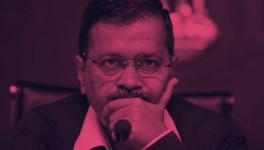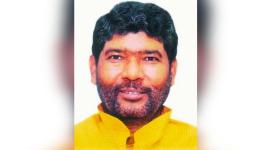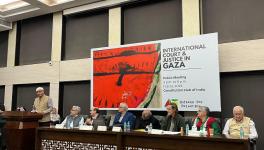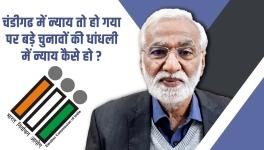The Challenge to Places of Worship Special Provisions Act, 1991 is Misconceived
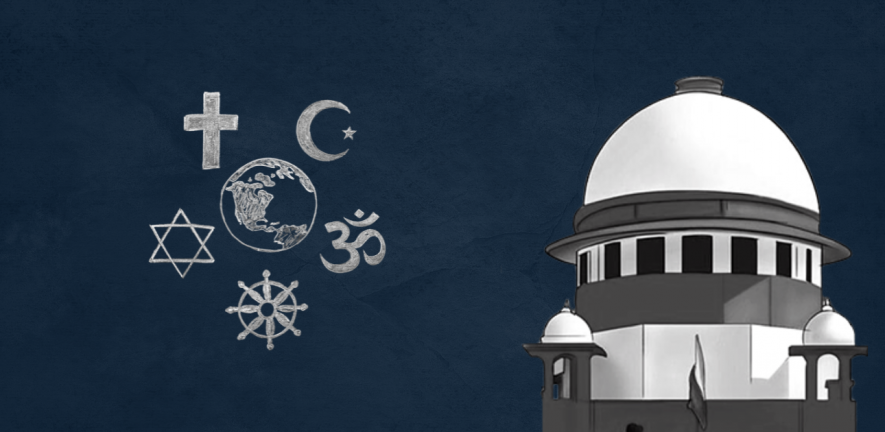
THE Places of Worship (Special Provisions) Act, 1991 protects places of worship of all denominations and sections thereof equally. Thus, the Act is based on the principle of equal entitlement of persons belonging to any religious denomination or section thereof.
It is germane to note that the right to freedom of religion is guaranteed to all persons equally under Article 25 of the Constitution. The right of one person to freely practice their religion is subject to right of another person to exercise the aforesaid freedom. The Act, thus, puts into practice a constitutional mandate, and it is unimaginable to term it as unconstitutional.
In Acharya Maharajshri Narandraprasadji Anandprasadji Maharasj versus State of Gujarat (1974), a Constitution bench of the Supreme Court observed:
“No rights in an organised society can be absolute. Enjoyment of one’s rights must be consistent with the enjoyment of rights also by others. Where in a free play of social forces it is not possible to bring about a voluntary harmony, the State has to step in to set right the imbalance between competing interests and there the Directive Principles of State Policy, although not enforceable in courts, have a definite and positive role introducing an obligation upon the State under Article 37 in making laws to regulate the conduct of men and their affairs.” (emphasis supplied by author)
Thus, the Act enforces non-retrogression of one of the basic features of constitutionalism, that is, secularism.
The Act enforces non-retrogression of one of the basic features of constitutionalism, that is, secularism.
Also read: Places of Worship (Special Provisions) Act, 1991: A shield for Indian secularism?
Any attempt at ‘undoing’ the perceived injustices of the past shall open a Pandora’s box of history, and is not only impracticable but may also result in chaos and anarchy known to ancient and medieval times. It is important to emphasize that the idea of constitutionalism and modern constitutions, including our Constitution, provide a fortuitous escape from such barbarous and authoritarian societies.
The phenomenon of shared sovereignty of the king and the deity, or the king as the appointee of the deity was a common occurrence in ancient and medieval times, and the advent of any new king resulted in the demolition of deities of the previous ruling class. This phenomenon was rife between not only different religions, but between different denominations in such religions/belief systems as well as sections thereof. Some common instances in this regard are as follows:
- Destruction of a Jewish temple in Jerusalem by the Neo-Babylonian king Nebuchadnezzar II in 587 BCE.
- Roman installation of the Temple of Jupiter in place of the Second Temple on Temple Mount in 70 CE.
- Instances of demolition of temples by Hindu kings:
a. In the early 10th century, the Rashtrakuta king Indra III destroyed the temple of Kalapriya, which was patronised by his arch enemy, Pratiharas.b. When the Kashmiri ruler Lalitaditya treacherously killed the king of Gauda (Bengal), his attendants sought to seek revenge. They clandestinely entered Lalitaditya’s capital and made their way to the temple of Vishnu Parihasakesava, the principal deity of the Kashmiri kingdom. However, they mistook a silver image of another deity for Parihasakesava, and took to grounding it to dust even as Kashmiri soldiers fell upon them.
Though the Gaudas failed to achieve the desired result, their act of retribution does illustrate the symbolism inherent in destroying the image the ruler worshipped. - Instances of image appropriation by Hindu kings:
a. In 642 CE, the Pallava ruler Narasimhavarman I defeated the Chalukyas, sacked their capital of Vatapi, and brought the image of Ganesha to his kingdom in Tamil Nadu. The image acquired the sobriquet of Vatapi Ganapati.b. In 950 CE, the Chandella ruler Yashovarman built the Lakshman temple at Khajuraho to house the Vishnu Vaikunth, made of gold. This image was initially obtained from Mount Kailash by the “Lord of Tibet”, from whom the Sahi King of Orissa wrested it. The Pratihara ruler Herambapala defeated the Sahis and wrested the image of the deity. Yashovarman then defeated Herambapala’s son, Devapala, and took it away to Khajuraho.
In this context, American Professor of Religion and Asian Studies Richard Davis notes, “There is no question that medieval Hindu kings frequently destroyed religious images as part of more general rampages.”
The Act is also rooted in the realisation that the need to protect religious places and to maintain its character is a sine qua non to avoid religious conflagrations. It was one of the contributory factors towards the evolution of secularism as an essential feature of modern constitutions.
The Act is rooted in the realisation that the need to protect religious places and to maintain its character is a sine qua non to avoid religious conflagrations.
It is to be noted that the religious wars and confrontations of Europe in 16th, 17th and 18th centuries provided an impetus to develop secular nation-states in the succeeding period. For example, the Thirty Years’ War (1618-1648) between Protestantism and Catholicism for the control of power over central Europe cost approximately 5 to 8 million people’s lives, and wiped out more than half of the population of certain regions in modern Germany.
The plea of the petitioner in Ashwini Kumar Upadhyay versus Union of India to invalidate the Act and allow conversion (or re-conversion) of certain places of worship through suits, petitions or otherwise is thus not only antithetical to the fundamental values and express provisions of the Constitution, but undoes the civilisational gains of humanity in terms of secularism being a sine qua non of a peaceful and progressive society.
The prevention of such mischief is essential to maintain a peaceful and stable society, to facilitate a regime based on liberty, equality and fraternity, and ensure the effective functioning of the Constitution. Any attempt at unravelling the Act or the norms enshrined therein shall not only jeopardise the secular character of the Constitution, but comprise a threat to the whole fabric of fundamental rights, and indeed the very constitutional form of government in our country. Hence, any attempt at subversion of the Act must be nipped in the bud.
The Act recognises that our nation’s independence provides a constitutional basis for the equality of religion, and pre-empts repetition of the perceived injustices of the past. It reaffirms Independence as the moment when India committed itself to a constitutional democracy.
The destruction of religious places has been one of the tools of imposing the authority of upcoming totalitarian regimes, as mentioned above. In modern democracies, the same may manifest itself in the form of majoritarianism, or outright authoritarianism. This tradition runs antithetical to the notion of constitutionalism, and is baleful for the working of the Constitution.
Independence as the basis
The petitioner’s contention in Ashwani Kumar Upadhyay that in the Act, the cut-off date to maintain status quo in the character of a place of worship is arbitrary, cannot be further from historical and constitutional reality, and seems to be an attempt at deliberate naivete.
The Act recognises that our nation’s independence provides a constitutional basis for the equality of religion, and pre-empts repetition of the perceived injustices of the past. The Act reaffirms Independence as the moment when India committed itself to a constitutional democracy. The Supreme Court is deeply cognizant of this historical reality and of the need to avoid the same is evident from the judgement of its Constitution bench in M. Siddique (D) & Ors. versus Mahant Suresh Das & Ors. (2019), popularly known as the ‘Ayodhya judgement’:
“There is a purpose underlying the enactment of the Places of Worship Act. The law speaks to our history and to the future of the nation. Cognizant as we are of our history and of the need for the nation to confront it, Independence was a watershed moment to heal the wound of the past. Historical wrongs cannot be remedied by the people taking the law in their own hands. In preserving the character of places of public worship, Parliament has mandated in no uncertain terms that history and its wrongs shall not be used as instruments to oppress the present and the future.”
Again:
“This Court cannot entertain claims that stem from the actions of the Mughal rulers against Hindu places of worship in a court of law today. For any person who seeks solace or recourse against the actions of any number of ancient rulers, the law is not the answer. Our history is replete with actions that have been judged to be morally incorrect and even today are liable to trigger vociferous ideological debate. However, the adoption of the Constitution marks a watershed moment where We, the People of India, departed from the determination of rights and liabilities on the basis of our ideology, our religion, the colour of our skin, or the century when our ancestors arrived at these lands, and submitted to the rule of law. Under our rule of law, this Court can adjudicate upon private property claims that were expressly or impliedly recognised by the British Sovereign and subsequently not interfered with upon Indian Independence.”
It is clear that the plea of conversion (or re-conversion) is tantamount to swinging one’s fist irrespective of the harm caused to others, and is thus abhorrent to the Constitution.
Also read: A Crisis of Resistance: Aftermath of the Ayodhya Judgement
The Act is firmly entrenched in the aspirational values of a free India, as enunciated during our freedom struggle. Mahatma Gandhi’s vision of a secular democratic State has been brought out by historian Bipan Chandra in his journal article Gandhiji, Secularism and Communalism (2004):
“M K Gandhi was basically and fully secular despite being deeply religious is well-known, as also that he wanted India to be a secular democratic state. And he asserted on 9 August 1942: “Free India will be no Hindu Raj, it will be Indian raj based not on the majority of any religious sect or community but on the representatives of the whole people without distinction of religion.””
This model of secularism, based on equal treatment to all religions and the absence of any State religion, is reflected in the Indian Constitution.
The Delhi High Court, in Surksh Chandra Chiman Lal Shah versus Union Of India & Ors. (1975), also observes that the source of Indian secularism is the freedom movement “which assured protection to the minorities and neutrality of the State in regard to all religions”:
“The evolution of the concept of secularism in modern India has a very different background. Inspired by the spirit of toleration and liberalism which characterised the Hindu thought from ancient times, the Indian National Congress developed a non-communal approach in politics leaving religion as being a matter of the conscience of the individual. The secularism in India developed as a part of nationalism and Freedom Movement which assured protection to the minorities and neutrality of the State in regard to all religions. This policy was embodied in the resolution of the Congress passed in 1931 at Karachi.”
Act only articulates what is inherent in the Constitution
Even without the Act, any attempt at conversion of religious places would run counter to freedom of religion as well as to the values of liberty, equality and fraternity, which are the basic features of the Constitution. The Act expressly enunciates and delineates what is inherent in the Constitution; any such articulation cannot even remotely be unconstitutional.
The plea of the petitioner for the aforementioned judicial remedy is in essence a plea to provide remedy for violation of the freedom of religion of persons belonging to other denominations or sections thereof. Such a plea to violate fundamental rights is grossly unconstitutional to begin with, and ought to be dismissed forthwith.
The plea of the petitioner thus runs counter to the provisions of freedom of religion, which is subject to inter alia morality. The term ‘morality’ needs to be understood based on the ‘harm principle’, which essentially means “your freedom to swing your fist ends where my nose begins”. It is clear that the plea of conversion (or re-conversion) is tantamount to swinging one’s fist irrespective of the harm caused to others, and is thus abhorrent to the Constitution.
Also read: A cautionary tale of two judgements: from Begumpura to Ayodhya
In National Legal Services Authority versus Union of India (2014), the Supreme Court observed that the internal morality of the Constitution is based on dignity and equality of all human beings:
“As we have pointed out above, our Constitution inheres liberal and substantive democracy with the rule of law as an important and fundamental pillar. It has its own internal morality based on dignity and equality of all human beings. The rule of law demands protection of individual human rights. Such rights are to be guaranteed to each and every human being. These TGs, even though insignificant in numbers, are still human beings and therefore they have every right to enjoy their human rights.” (emphasis supplied by author)
The plea in Ashwini Kumar Upadhyay runs counter to such equality, and contends that the rights of persons belonging to certain denominations or sections thereof is to be preferred over others. Thus, it violates all norms of constitutional morality.
Judicial remedy
The Act does not curtail the judicial remedy for any guaranteed right. For there cannot be a judicial remedy to enforce claims of one party in derogation of the guaranteed rights of another party. The plea of the petitioner for the aforementioned judicial remedy is in essence a plea to provide remedy for violation of the freedom of religion of persons belonging to other denominations or sections thereof. Such a plea to violate fundamental rights is grossly unconstitutional to begin with, and ought to be dismissed forthwith.
Also, the contention that the Act bars any remedy against illegal encroachment is factually wrong. The remedy for illegal encroachment on the property of any such place of worship is available under the relevant laws. In fact, the Act protects the places of worship of any religion against encroachments which are in the nature of conversion of such places of worship of other religious denominations, or other sections of the same denomination.
Also read: Varanasi and Mathura, new Ayodhya in the making
In the end, it ought to be emphasized that on certain occasions, it may be necessary to ascertain the character of a place of worship, but the same must be permitted only in rare cases, in which the dispute is genuine and based on regular usage of the place by people belonging to different contending denominations or sections thereof. Otherwise, the possibility of ascertainment is wrought with mischief, since a place of worship may deliberately be brought into dispute and then the contending party may invite judicial intervention for ascertainment of its character.
In cases where ascertainment is allowed, the reference date of the same ought to be August 15, 1947, and not the perceived usage of a particular place by a different contending religious denomination in historical antiquity.
Indeed, the mere presence of the Cross will not turn an article of Christian faith into an article of the Zoroastrian faith; nor does an article of Zoroastrian faith make it a structure of Christian faith.
But if there is a structure where a Ganesha idol is placed in the sanctum sanctorum along with other accoutrements usual of a denominational temple, the mere presence of a cross on one side is not sufficient to raise reasonable doubt as to the character of the place.
Hence, the exercise of ascertainment must be based on reasonable grounds with strong proof of dispute as on August 15, 1947, and must be carried out in an utmost impartial and fair manner. Only then, the Act may prove effective in protecting the constitutional mandate that it seeks to effectuate.
Get the latest reports & analysis with people's perspective on Protests, movements & deep analytical videos, discussions of the current affairs in your Telegram app. Subscribe to NewsClick's Telegram channel & get Real-Time updates on stories, as they get published on our website.









